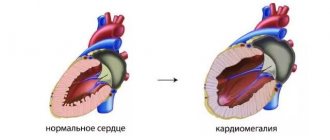Multiple sclerosis (MS) is a progressive disease. This means that the system designed to keep your body healthy is mistakenly attacking parts of the body that are vital to daily functioning. The protective covering of nerve cells is damaged, leading to decreased function of the brain and spinal cord.
The first signs of sclerosis in young people appear between the ages of 20 and 40 years. Usually they go down, but then come back again. The patient may be bothered by one symptom, and then months or years pass without any manifestations of the disease. The problem can also happen only once, but then go away and never return. For some people, the condition worsens over weeks or months.
A timely visit to a doctor will allow you to control the disease and help the specialist understand how effective your treatment is.
The first signs of multiple sclerosis in young people
The first indicators are varied and unpredictable, depending on which part of the central nervous system is affected and to what extent.
The most common disorders in young people are vision, sensitivity, emotional disorders, cerebellar functioning, and pelvic organs. Virtually any neurological symptom can be caused by multiple sclerosis. Some are immediately obvious. Others, such as fatigue, numbness and cognitive fog, may not be noticeable. This condition is quite difficult for the patient to describe to others, which makes it difficult for family and friends to understand the alarming signs.
Although there is no specific cure for MS, existing treatment approaches can help manage the disease and slow its progression. Early intervention offers the best chance against long-term disability. Therefore, it is very important to recognize the initial signs and consult a doctor immediately. Read on to learn more about the indicators of multiple sclerosis.
Expert opinion
Author: Olga Vladimirovna Boyko
Neurologist, Doctor of Medical Sciences
Multiple sclerosis is a progressive disease characterized by a malfunction of the central nervous system. The immune system, which is essential to keeping the body healthy, mistakenly begins to attack vital organs and body parts needed to function properly. As a result of the disease, the protective covering of nerve cells is affected, which entails a deterioration in the functioning of the spinal cord and brain.
The first symptoms of the disease in young people appear between the ages of 20 and 45 years. Sometimes they disappear, but then return with increasing force. The patient may be bothered by just one of the possible symptoms, and then years will pass without any manifestations of the disease.
The first signs of multiple sclerosis are unpredictable and varied, depending on which part of the nervous system is damaged and how damaged it is. These may be vision problems, emotional disorders, poor coordination, etc. Any of the neurological symptoms can occur due to multiple sclerosis. Some of them can be detected immediately, but signs such as increased fatigue and numbness may go unnoticed.
There is no cure for multiple sclerosis, but specific treatment approaches have already been developed to help curb the progression of the disease. The earlier therapy is started, the greater the chance of coping with the negative manifestations of the disease. Doctors at the Yusupov Clinic will conduct a full examination of the patient to select the optimal treatment.
Possible causes of sclerosis
Since the causes of sclerosis have not yet been identified, there are some assumptions about this disease. These are internal and unfavorable factors that contribute to the appearance of this disease.
Unfavorable factors contributing to the occurrence of sclerosis:
- caused by viral and bacterial diseases;
- poisoning of the body (intoxication);
- poor quality nutrition;
- psychological trauma in childhood;
- physical injuries;
- constant experience of stress.
Internal factors contributing to the appearance of sclerosis include the following reasons:
- human gene pool;
- disruptions in the functioning of the human immune and lymphatic system.
All of the above factors alone will not lead to the development of this pathology; only if the general symptoms listed above occur, this is possible. In this regard, it is necessary to monitor your condition from early childhood, but this should be done by the child’s parents.
Optic nerve damage
A common vision problem called optic neuritis is considered an early indicator of MS. It is considered a more “specific” sign compared to “vague” neurological symptoms such as tingling or numbness.
Optic neuritis is characterized by:
- temporary loss of vision;
- color blindness;
- Pain in the eyes;
- double vision.
In addition to the optic neuritis that accompanies MS, involuntary eye movements are added.
Sensory impairment
A unique aspect of the symptoms of multiple sclerosis is the extremely common temperature sensitivity of patients whose neurological symptoms are temporarily aggravated by an increase (or decrease) in body temperature.
Heat sensitivity, or Uthoff's phenomenon, occurs in 60–80% of patients with this disease. An increase in body temperature may cause temporary deterioration, usually associated with exposure to a warm environment or exercise, and lasts until core temperature returns to baseline. However, a decrease in body temperature as a result of taking cold baths or exposure to low ambient temperatures can also provoke a worsening of the clinical picture of the pathology.
Episodes of temperature sensitivity among patients with sclerosis are also known as pseudoexacerbations or pseudorelapses. Although the increase in symptoms may be similar in nature to those that occur during an exacerbation, the worsening of the condition is not associated with the active progression of the disease and is temporary. Moreover, the symptoms return to normal when the internal temperature is restored. Therefore, the patient experiences significant difficulties in maintaining an appropriate level of physical activity
Therapy at home
When treating and caring at home, the patient requires professional help and constant diagnosis of the disease. This will make it possible to monitor the patient’s condition and not miss the need for urgent therapeutic intervention. Therefore, high-quality treatment and care at home will not work. What can be offered in such a situation is only care without treatment or special measures.
Our boarding house with a medical focus invites you to leave useless activities and turn to us for help. Our specialists will conduct a full diagnosis of the ward and talk about his condition at this hour, advise the correct measures of care or full service in our boarding house.
Cerebellar disorders
Coordination problems are common in multiple sclerosis and arise mainly from pathology in the cerebellum itself or when brain connections are disrupted. Patients may have either acute dysfunction associated with an acute exacerbation or chronic cerebellar problems with progressive disease.
Involvement of the cerebellar and brainstem connections occurs quite often during an exacerbation. Relapse of the cerebellum early in the development of the disease is associated with an increased risk of cerebellar damage during the subsequent course of MS. Experience shows that cerebellar involvement early in the disease worsens the prognosis. In a recent database study of approximately 15,000 patients who experienced a total of 50,000 exacerbations, cerebellar relapses accounted for approximately 10% of the total. They were more common in younger men and those with longer duration of progression.
It is estimated that 80% of patients with established MS experience tremors, which are especially common in patients with advanced disease. This is a consequence of unstable functioning of the cerebellum. Tremor can affect the limbs, trunk, vocal cords and head, but such a severe form is a relatively rare consequence of sclerosis.
Thus, cerebellar dysfunction may be a clear indicator of progressive MS. In general, this entails increased disability and poor prognosis.
How to help loved ones cope with illness
Chronic pathology becomes more and more severe over time. Attacks occur suddenly, at least 2 times a year. Often people lose the ability to move, care for themselves, and become helpless. The boarding house “Quiet House” has created all the conditions so that patients with multiple sclerosis from Voronezh feel as comfortable as possible:
constant supervision of doctors and health workers;
- comfortable beds and anti-decubitus mattresses;
- full sleep - the patient is not distracted by the hustle and bustle of the home;
- balanced feeding and drinking regime;
- if necessary, assistance with feeding and personal care;
- caring and understanding attitude.
Disorders in the functioning of the pelvic organs
Sixty-eight percent of people with MS experience one or more types of pelvic floor abnormalities. Symptoms include loss or absence of bladder or bowel control: urinary incontinence, urinary frequency and urgency, bowel incontinence, sexual dysfunction, pelvic organ prolapse, and pelvic pain associated with a “spastic” pelvic floor.
The most common diagnosis among MS patients is a spastic (overactive) bladder. The organ is unable to hold a normal amount of urine in the bladder, which does not empty properly.
A spastic bladder is characterized by:
- private urination;
- hesitancy to start urinating;
- frequent night urination;
- urinary incontinence;
- inability to completely empty the bladder.
Healthy bladder function is important for long-term kidney health, infection prevention, personal independence, self-confidence and improved quality of life. Untreated bladder problems can cause:
- increasing weakness;
- Bladder and urinary tract infections (UTIs) or kidney stones, which cause serious pain and compromise your overall health;
- problems with work, home and social activities;
- loss of independence, self-esteem and self-confidence.
Early medical evaluation is important to determine the cause of bladder dysfunction and select appropriate treatments. More serious urinary problems can lead to blood and skin infections.
Professional care at the Vesna boarding house
Caring for a patient with multiple sclerosis is a difficult task. We understand the relatives of such a patient, therefore, we offer high-quality services for this event. Since the patient is in a helpless state, our staff will do everything to make him feel comfortable and undergo all the treatment measures prescribed by our doctors.
Why is it difficult to care for a person diagnosed with multiple sclerosis? The whole point is that:
- the patient constantly experiences chronic fatigue;
- constantly forgets everything he knows or has learned in a day;
- confuses the sequence of his actions;
- violates the use of medication doses and the time of taking them.
A patient in such a situation requires constant help and moral support. Our employees will give everything your relative needs and brighten up his loneliness.
Providing patronage services
When providing care services, there are standard types of responsibilities:
- when moving, the patient is provided with the necessary special medical equipment;
- exercising full control over the use of medications;
- constant change of linen;
- Clothing repair;
- daily walks;
- accompanying the ward to physical procedures;
- assistance with eating;
- haircut and other hygiene services.
In addition, there are additional services, but this is discussed with the boarding house management.
Emotional disorders
Emotional disturbances are often common in MS and include mood changes and affective states. Important mood disorders include major depression, panic attacks, and anxiety. Their relationship to disease is multifactorial and complex, and the extent to which they are direct consequences of disease remains unclear.
Symptoms of mood disorders in young people with MS do not differ from those in healthy people and respond just as well to standard treatment. Affect disorders include euphoria, pathological laughter and crying, and other symptoms. These abnormalities are the result of a lack of myelin and are one of the most characteristic indicators of multiple sclerosis.
Mood and affective disorders can cause enormous pain and distress to the patient and lead to disruption of family, career and social life. Doctors who can effectively diagnose and treat this can have a significant impact on patients' quality of life.
Diagnosis of early multiple sclerosis
The doctor must perform all the necessary neurological examinations, take a medical history and conduct a number of other tests to determine the presence of sclerosis in a young patient.
Diagnostic testing may include the following procedures:
- MRI scan. The use of contrast dye with MRI allows the doctor to identify active and inactive lesions in the brain and spinal cord;
- visual evoked potential test—requires stimulation of nerve pathways to analyze electrical activity in the brain. In the past, auditory potential tests have also been used to diagnose the disease;
- spinal studies - a study of the spinal cord is performed to identify abnormalities in the cerebrospinal fluid. This may help eliminate the possibility of infections;
- blood tests are carried out to exclude the possibility of other pathologies with similar indicators.
Making a diagnosis requires evidence that demyelination (the immune system's destruction of myelin) occurs at different times in more than one area of your brain, spinal cord, or optic nerves.
The diagnostic process also requires excluding other diseases that have similar symptoms. Lyme disease, lupus, and Sjögren's syndrome are just a few examples.
Treatment of multiple sclerosis in young people
Treatment is divided into 3 categories:
- therapy for exacerbations;
- slowing progression using modification methods;
- symptomatic therapy.
Treatments are becoming increasingly complex as additional subtypes of the disease are being explored. This reduces the frequency and severity of exacerbations, as well as the accumulation of lesions detected by magnetic resonance imaging.
Initiating treatment to slow inflammatory lesions in the early stages is considered a way to prevent the development of disability. There is not yet enough comparative effectiveness data to guide health care providers in making optimal treatment choices.
Yusupov Hospital is one of the best centers for the treatment of multiple sclerosis in Moscow. Contact us for a consultation!
Treatment methods
The main goal of therapy for multiple sclerosis is to prevent further development of the disease, prevent exacerbations and relieve symptoms.
Therapeutic measures involve the use of medications. To combat the consequences, hormonal agents, cytostatics and plasmapheresis are prescribed.
Immunomodulators, beta-interferon, Glatiramer acetate, Natalizumab and some other medications help to exclude the progression of pathology. They are aimed at reducing the risk of relapse, preventing disability and suppressing further spread of plaques.
Various pharmacological groups are used as symptomatic therapy to normalize the functioning of organs and systems, relieve pain, improve motor activity, memory and attention.
If treatment for multiple sclerosis is started in a timely manner, then severe complications can be avoided and the duration of remission can be maximized.











